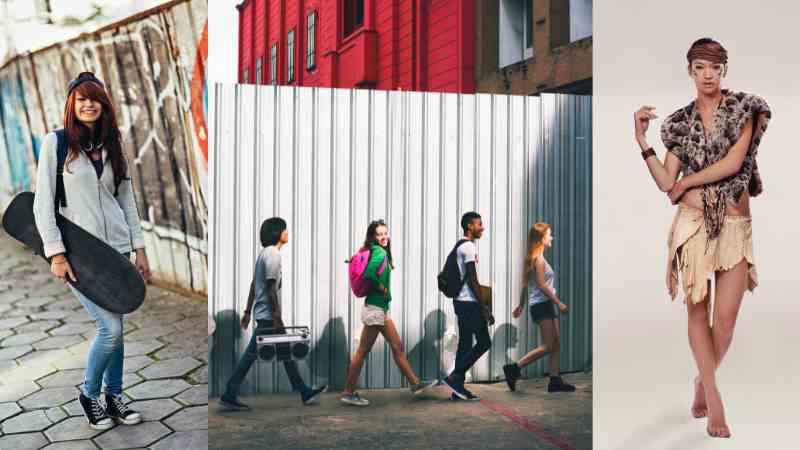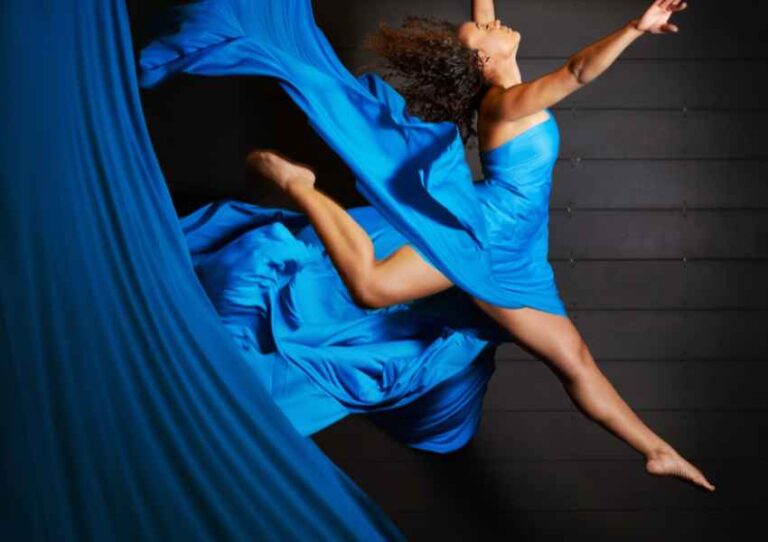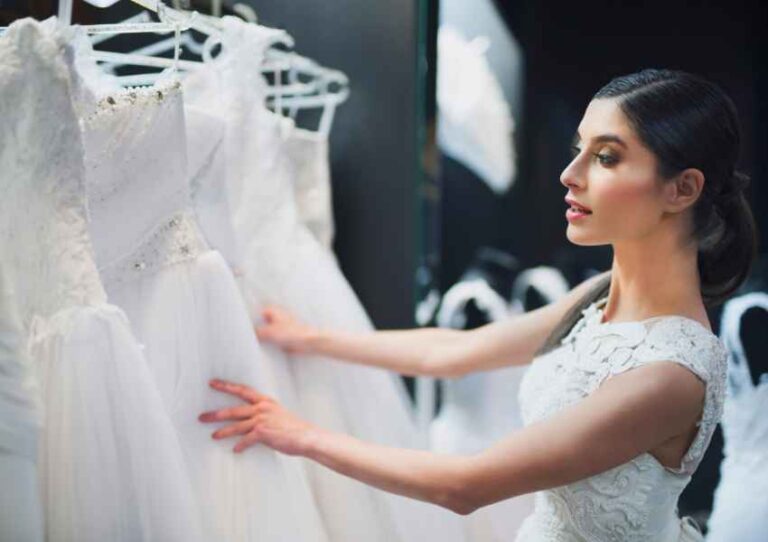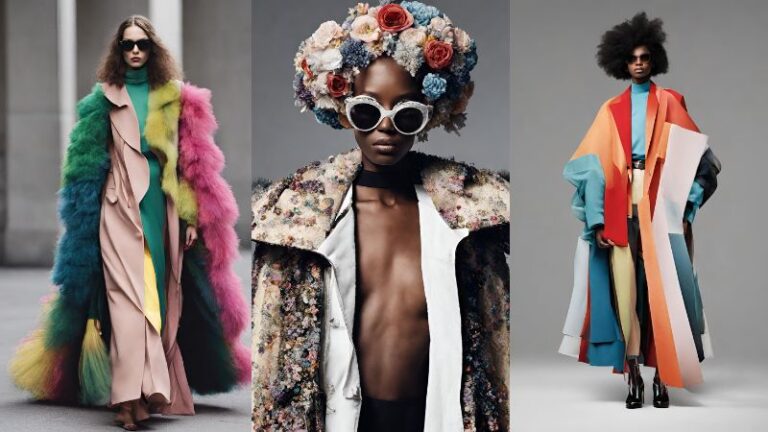Definition of Fashion Subcultures Fashion subcultures refer to distinct and often unconventional groups within society that share a unique set of fashion preferences, styles, and attitudes. These subcultures often emerge as a way for individuals to express their identity, rebel against societal norms, or align themselves with specific cultural movements through clothing and personal style.
The Significance of Fashion Subcultures in Pop Culture Fashion subcultures play a vital role in shaping and influencing popular culture. They challenge conventional fashion norms, inspire innovation, and have a lasting impact on the fashion industry. These subcultures serve as a reflection of societal shifts, attitudes, and youth rebellion, making them a captivating aspect of pop culture.
Overview of Subcultures to be Discussed (Punk, Hip-Hop) In this exploration of fashion subcultures, we will delve into two iconic movements: punk and hip-hop. These subcultures have left an indelible mark on the world of fashion, music, and lifestyle. We will examine their historical contexts, the elements that define their unique styles, and their influence on mainstream fashion.
Quick Tips on Fashion Subcultures: From Punk to Hip-Hop
Definition: Fashion subcultures are unique groups expressing identity through fashion. They rebel against norms and align with cultural movements.
Significance: Subcultures shape pop culture, inspire innovation, and reflect societal shifts, offering captivating insights into our world.

Punk (1970s):
- Origins: response to social unrest, influenced by counterculture and DIY ethos.
- Rebellion: rejecting consumerism and societal norms.
- Fashion Elements: DIY aesthetic, punk music influence, iconic leather jackets, ripped clothes, and band merch.
- Impact: high fashion incorporation and a lasting legacy in streetwear.
- Origins: Born in the South Bronx, addressing urban challenges.
- Roots: Deeply rooted in African American and Latinx cultures, encompassing rap, DJing, breakdancing, and graffiti.
- Fashion elements: streetwear, baggy clothing, sneakers, and street jewelry.
- Evolution: Transition from gan gsta rap to designer labels in the 90s Golden Era.
- Impact: influence on luxury brands and creation of “luxury streetwear.”
- Youth Rebellion: Both subcultures empower youth to challenge norms and express their identities.
- Music as a Force: Music inspires fashion choices, attitudes, and values.
- Subversion: Punk and hip-hop challenge mainstream fashion norms, reshaping the industry.
- New Subcultures: E-girls, VSCO girls, and others influenced by social media.
- Internet’s Role: Online platforms accelerate subculture spread and democratize fashion.
- Globalization: Subcultures are no longer confined to regions, leading to hybrid fashion trends.
Punk Subculture: Historical Context (1970s)
- Origins and Influences The Punk subculture emerged in the 1970s, primarily in the United Kingdom and the United States. It was a response to the political and social unrest of the time, drawing inspiration from the DIY ethos of the counterculture movement of the 1960s and the dissatisfaction with mainstream culture.
- Rebellion and Anti-Establishment Ideals Punk was characterized by a spirit of rebellion and anti-establishment sentiments. Its followers rejected the consumerism, conformity, and societal norms prevalent during that era.

Fashion Elements
- DIY Aesthetic The Punk movement embraced a “do-it-yourself” (DIY) aesthetic, encouraging individuals to create their clothing and accessories. This ethos gave rise to hand-painted jackets, safety-pin adornments, and customized punk patches.
- Punk Music and Its Influence on Style Punk music, with bands like The Sex Pistols and The Ramones, had a profound impact on the fashion of the subculture. Lyrics, album artwork, and the stage presence of punk musicians heavily influenced the style choices of their fans.
- Iconic Punk Clothing (Leather, Ripped Clothes, Band Merch) Iconic punk clothing included leather jackets, ripped clothing, bondage pants, and band merchandise. These items became symbols of rebellion and non-conformity.
Impact on Mainstream Fashion
- High Fashion Incorporation Punk’s rebellious style gradually made its way into high fashion, with designers like Vivienne Westwood and Jean Paul Gaultier incorporating punk elements into their collections.
- Legacy of Punk Aesthetic The punk aesthetic continues to influence fashion, especially in streetwear and punk-inspired subcultures. Its legacy persists as a symbol of anti-establishment and individuality.
In the subsequent sections, we will explore the hip-hop subculture in a similar fashion, examining its historical context, fashion elements, and impact on mainstream fashion.
Hip-Hop Subculture-Historical Context (1980s)
- Birth in the South Bronx The Hip-Hop subculture originated in the South Bronx, New York City, during the late 1970s and early 1980s. It was born as a response to the economic and social challenges faced by African American and Latinx communities in the area. Hip-Hop provided an artistic outlet for youth in the midst of urban decay, poverty, and gang violence.
- Social and Cultural Roots Hip-Hop was deeply rooted in the African American and Latinx cultures of the South Bronx. It encompassed various elements, including rap music, DJing, breakdancing, and graffiti art. These elements served as forms of self-expression and a means of addressing societal issues.
Fashion Elements
- Streetwear and Athletic Influences Hip-hop fashion was heavily influenced by the streets, incorporating elements of urban style and athleticism. Baggy clothing, graphic tees, hoodies, and tracksuits were staples of hip-hop streetwear. The influence of sports brands like Adidas and Nike was prominent.
- Baggy Pants, Sneakers, and Street Jewelry Baggy pants, often worn low, became an iconic feature of hip-hop fashion. Sneakers, particularly high-tops, became a symbol of authenticity and cultural pride. Street jewelry, including oversized chains and flashy accessories, played a significant role in individual expression.
- Evolution of Hip-Hop Fashion (Gangsta Rap, 90s Golden Era) Hip-hop fashion has evolved over the years to reflect the subgenre’s changing themes and attitudes. The emergence of Gangsta Rap in the late 1980s brought a more street-tough aesthetic, with artists like N.W.A. popularizing Raiders gear and gang-affiliated clothing. In the 1990s Golden Era, artists like Tupac Shakur and The Notorious B.I.G. contributed to a trend of designer labels and luxury brands becoming synonymous with hip-hop success.
Influence on Mainstream Fashion
- Hip-Hop’s Impact on Luxury Brands Hip-hop’s popularity and cultural influence led to luxury fashion brands recognizing its immense market potential. As a result, brands like Gucci, Versace, and Louis Vuitton started incorporating hip-hop motifs and collaborating with hip-hop artists. This fusion of high fashion and streetwear became known as “luxury streetwear.”
- Hip-Hop Style Icons (Run DMC, Notorious B.I.G., Kanye West) Hip-hop has produced numerous style icons who have left a lasting impact on the fashion world. Run DMC’s adoption of Adidas and the iconic tracksuit, The Notorious B.I.G.’s dapper suits, and Kanye West’s Yeezy fashion line are just a few examples of how hip-hop artists have shaped fashion trends and established themselves as cultural tastemakers.
More Post : Influence Of Street Style On Fashion Culture
The hip-hop subculture, with its roots in urban expression and cultural identity, has not only transformed fashion but also played a significant role in challenging societal norms and advocating for change. Its influence on mainstream fashion continues to be felt, making it a lasting and significant force in the fashion world.
Common Threads Between Subcultures
Youth Rebellion and Identity Expression Both punk and hip-hop subcultures share a common thread of youth rebellion and identity expression. They have provided platforms for young individuals to challenge societal norms, express their unique identities, and rebel against mainstream conventions. These subcultures serve as outlets for self-discovery and self-assertion, empowering young people to define themselves on their terms.
Music as a Driving Force Music has been a driving force behind both punk and hip-hop subcultures. These movements are intrinsically linked to their respective music genres, which not only provide a soundtrack but also inspire fashion choices, attitudes, and values. Punk and hip-hop musicians have acted as cultural icons, using their music to convey messages of rebellion, empowerment, and social commentary.
Subversion of Mainstream Fashion Norms Both subcultures have subverted mainstream fashion norms. Punk challenged the idea of polished, conformist fashion with its DIY and anti-establishment aesthetic. Hip-hop, on the other hand, redefined luxury and streetwear, breaking down the barriers between high fashion and urban style. In doing so, these subcultures have reshaped the fashion industry and expanded its boundaries.
Contemporary fashion subcultures
Emergence of New Subcultures (e.g., E-girls, VSCO Girls) In the digital age, new fashion subcultures have emerged. E-girls and VSCO girls are two examples of subcultures with distinctive fashion senses that frequently draw heavily from online forums and social media. These subcultures demonstrate how fashion continues to evolve as a means of identity expression among today’s youth.
How the Internet Has Shaped Fashion Subcultures The internet has played a pivotal role in the formation and dissemination of fashion subcultures. Online platforms, social media, and e-commerce have accelerated the spread of subcultural styles, allowing individuals from diverse backgrounds to connect and share fashion trends. This digital landscape has democratized fashion, enabling subcultures to reach a global audience.
Globalization and Cross-Pollination of Subcultural Styles Fashion subcultures are no longer confined to specific geographic regions. Globalization has facilitated the cross-pollination of subcultural styles, with individuals worldwide adopting elements from different subcultures. This interplay between cultures and subcultures has led to the creation of hybrid fashion trends that reflect the diversity of today’s globalized world.
Conclusion
The Enduring Influence of Punk and Hip-Hop Punk and hip-hop subcultures have left an indelible mark on the world of fashion and culture. Their enduring influence is evident in contemporary fashion, music, and societal attitudes. The rebellious spirit, DIY ethos, and unique styles of these subcultures continue to resonate with new generations.
Fashion Subcultures as a Reflection of Societal Change Fashion subcultures serve as mirrors of societal change, reflecting the values, attitudes, and aspirations of their time. They challenge the status quo and push boundaries, providing a lens through which we can analyze cultural shifts and the evolving nature of identity and expression.
Future Trends in Fashion Subcultures As fashion and culture continue to evolve, we can anticipate the emergence of new and innovative subcultures that challenge existing norms and redefine the boundaries of fashion. The fusion of digital technology, globalization, and individualism will likely continue to shape the landscape of fashion subcultures in the future, making them a fascinating and ever-evolving aspect of our cultural tapestry.






